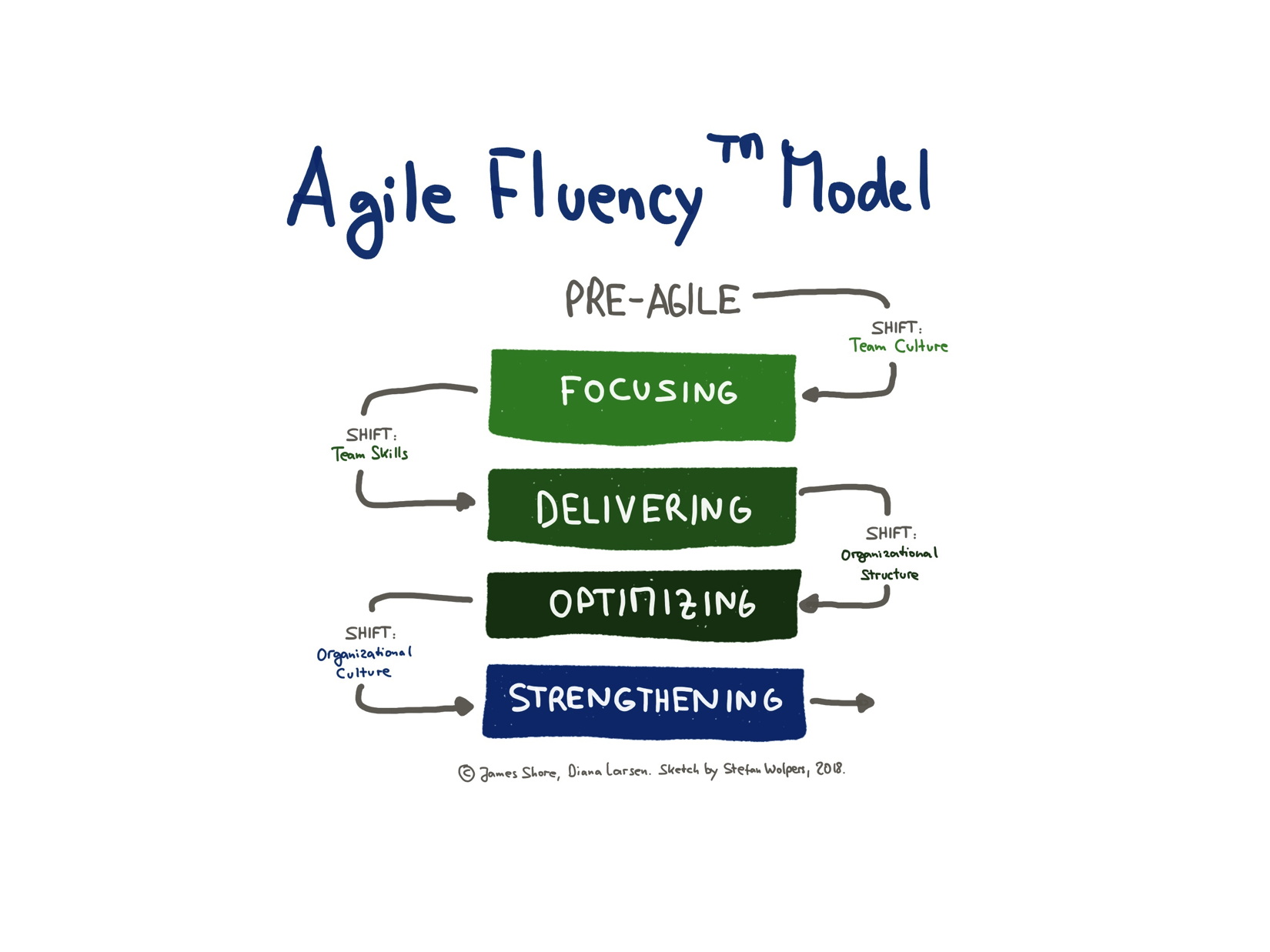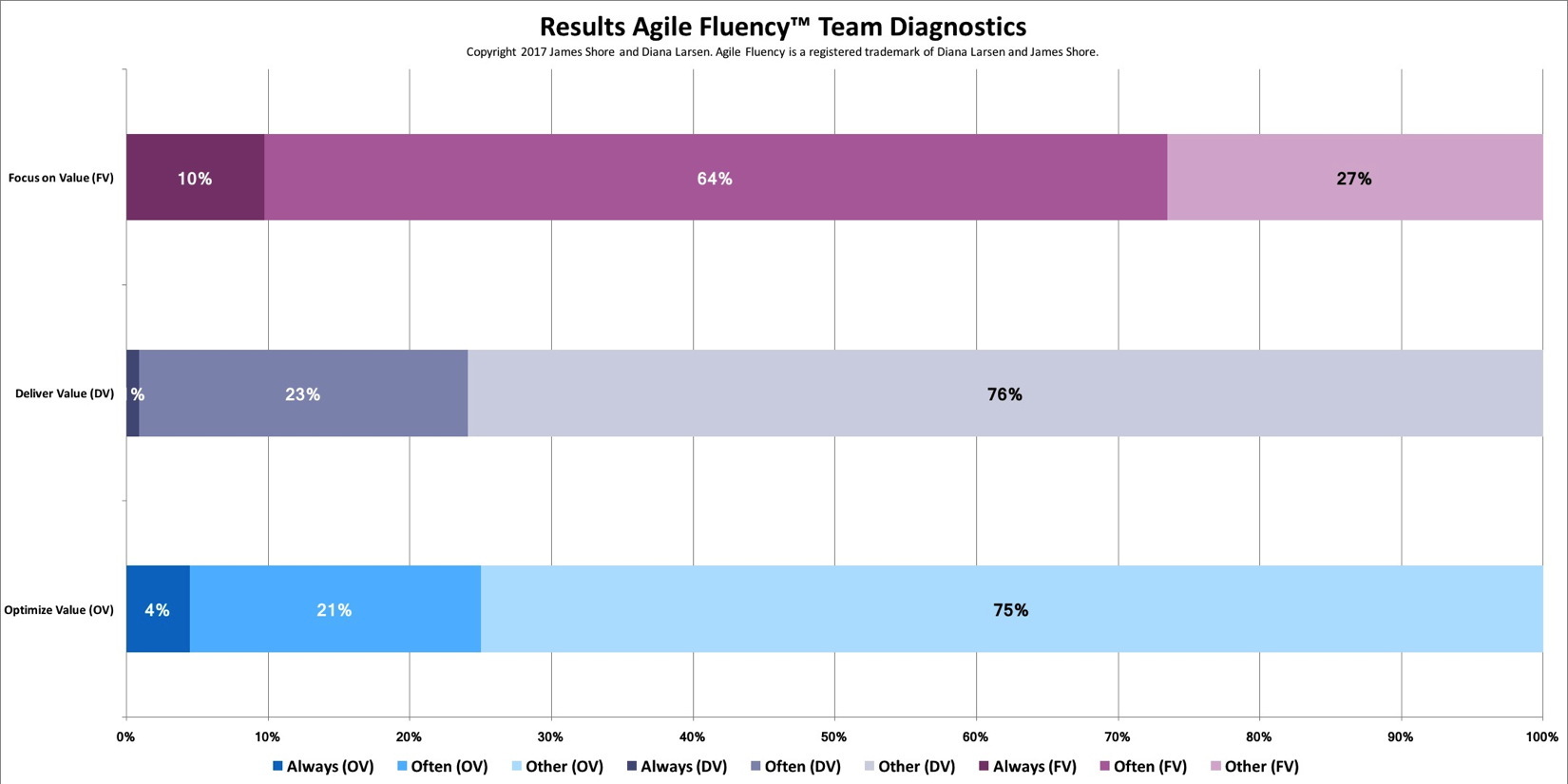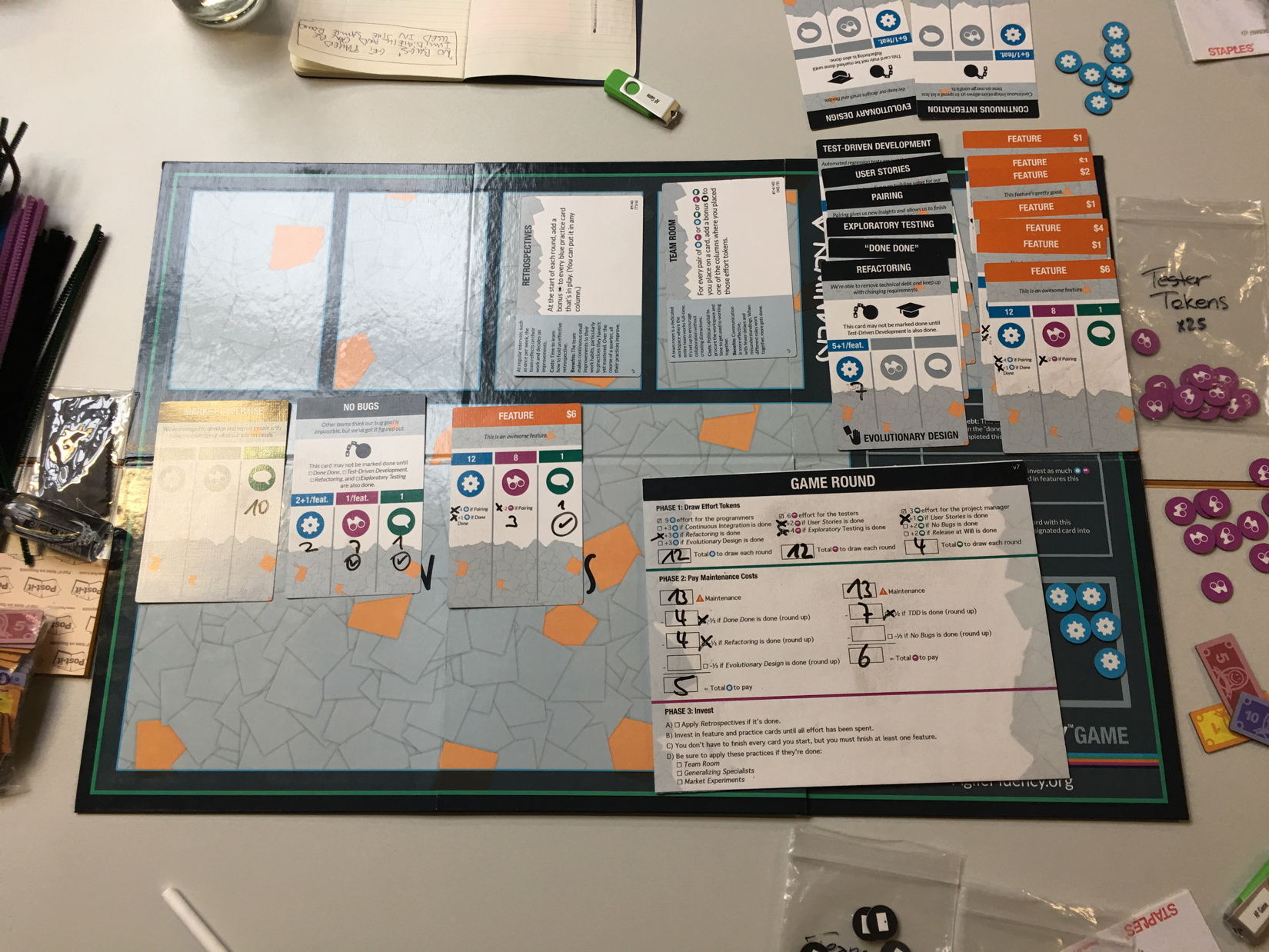Agile Fluency™ Model
The Agile Fluency ™ Model by James Shore and Diana Larsen
The Agile Fluency ™ model was developed by James Shore and Diana Larsen to guide teams new to agile practice on their path. The model reflects development patterns that teams frequently go through on their agile journey. However, the Agile Fluency ™ model is not a maturity model.
Instead, the steps of the model that may look from the outside like maturity levels are literacy or “fluency” zones. (The metaphor of learning a foreign language applies well here.) Each fluency zone constitutes a valid level of a team’s agility. Also, a combination of elements of more than one zone can describe an organization’s level of agile fluency.

About 60 percent of ‘agile’ organizations seem to fall into zone one (Focusing), about 30 percent belong to zone two (Delivering), while five to ten percent can be assigned to zone three (Optimizing). There is no valid data available on possible candidates for the zone four — Optimizing (for Systems) — as there are only a few companies known to be in that zone. For example, Semco, or Menlo Innovations.
Learn more about the Agile Fluency ™ Model from this video by Diana and James:
The Agile Fluency™ Model Zones
We can characterize the four fluency zones as follows:
Agile Fluency™ Model Zone 1: Focusing
Zone 1 of the Agile Fluency™ model is centered around a shift in the team’s culture. The team is now focusing on working on the most valuable things at all time although the road to value-based prioritization will likely be a bumpy one. Nevertheless, from a business perspective progress is already visible. What we observe in this zone, for example, is the application of basic Scrum principles or a switch to Kanban.
These fundamentals will usually take two to six months to master, and approximately 60 percent of all agile teams across organizations fall into zone 1 of the Agile Fluency™ model. (Note that falling in zone 1 does exclude borrowing already some techniques from zone 2.)
Agile Fluency™ Model Zone 2: Delivering
Zone 2 of the Agile Fluency™ model addresses team skills, mainly being able to release at will, shipping product on a market cadence, capturing value frequently, and revealing obstructions early. All of this requires investments both in software craftsmanship — from extreme programming to clean code to DevOps — as well as creating cross-functional teams.
These steps will typically take from five to eighteen months to master, and approximately 30 percent of agile teams fall into zone 2 of the Agile Fluency™ model.
Agile Fluency™ Model Zone 3: Optimizing
Zone 3 of the Agile Fluency™ model reflects the shift to improve the organizational value of a team by incorporating business expertise. In zone 3 we talk about applying techniques like Lean Startup or Design Thinking to make innovative product decisions. The team will reduce handoffs, improve the flow of work, and address organizational obstacles that impede the team’s future success.
Depending on the nature of the organization, these fundamentals will take from twelve months to three years to master, and no more than five to ten percent of agile teams fall into zone 3 of the Agile Fluency™ model.
Agile Fluency™ Model Zone 4: Strenghtening
Zone 4 of the Agile Fluency™ model is all about optimizing systems by changing their organizational culture. Probably, this means moving toward sociocracy, to holacracy, or teal organizations. Teams understand business priorities and seek to collaborate with other teams to improve the overall value stream, thus propelling innovation in a self-organized manner.
The Agile Fluency ™ Model in Practice
There are two immediate applications of the Agile Fluency ™ Model that can support organizations on their voyage to becoming agile organizations:
The Agile Fluency ™ Diagnostic
The Agile Fluency ™ Diagnostic is a team-based workshop during which a team assesses its situation: from the levels of competence in agile practices to technical excellence to organizational debt and the resulting potential for improvements.
The diagnostic tool centers around a questionnaire comprising of seven questions each for the first three zones (from Focusing to Optimizing) that are answered by each team member. The answers range from ‘1/Never’ to ‘5/Always.’ Based on the distribution of individual answers, the Agile Fluency Diagnostic ™ provides a visualization of a team’s current status:

Once you run this practice with all teams regularly and you aggregate the team results you will create a data set over time that reflects the progress of your organization’s agile transition. Based on this analysis, we not only provide you with a detailed status report of your teams’ (and organization’s) strengths and weaknesses based on the Agile Fluency ™ model. We also identify specific areas of investment in agile practices, which will improve your organization’s return on previous, as well as suitable, future investments.
Learn more about how the Agile Fluency ™ Diagnostic workshop can support your organization in becoming agile.
The Agile Fluency ™ Game
The Agile Fluency ™ Game is a real-life simulation of how a team adopts agile practices—or fails at doing so—in the form of a European-style board game. The game was modeled after the beforementioned fluency patterns of successful agile teams.
The game is an ideal training exercise for new members of agile software development teams who haven’t yet worked with agile practices: developers, product managers, project managers, business analysts or designers.
The game is also very well suited for managers and executives who want to gain insight into themes like business agility, agile transformations or innovative product development practices in general. The Agile Fluency Game ™ does not require specific software development knowledge as a prerequisite for a successful participation.
Learn more about how the Agile Fluency ™ Game can support your organization in becoming agile.
Conclusion: The Agile Fluency ™ Model
The Agile Fluency ™ Model reveals two insights:
- There is no checklist-based methodology available that guarantees success if only sufficient resources are allocated to becoming agile. Becoming agile is indeed a journey and each organization’s path is unique, depending on its size, the industry, its history, its organization patterns—to name a few factors in this complex equation.
- The goal of becoming agile is not some organizational Nirwana. Not every organization is supposed to morph into a Semco-like entity. It is a valid goal for any organization to become fluent in ‘agile’ in zone two. The Agile Fluency ™ Model can support your organization’s journey compellingly.
✋ Do Not Miss Out: Join the 3,800-plus Strong ‘Hands-on Agile’ Slack Community
I invite you to join the “Hands-on Agile” Slack team and enjoy the benefits of a fast-growing, vibrant community of agile practitioners from around the world.

If you like to join now all you have to do now is provide your credentials via this Google form, and I will sign you up. By the way, it’s free.
📅 Scrum Training Classes, Workshops, and Events
You can secure your seat for Scrum training classes, workshops, and meetups directly by following the corresponding link in the table below:
See all upcoming classes here.

You can book your seat for the training directly by following the corresponding links to the ticket shop. If the procurement process of your organization requires a different purchasing process, please contact Berlin Product People GmbH directly.
Tags: Agile Fluency™, Agile transformation
